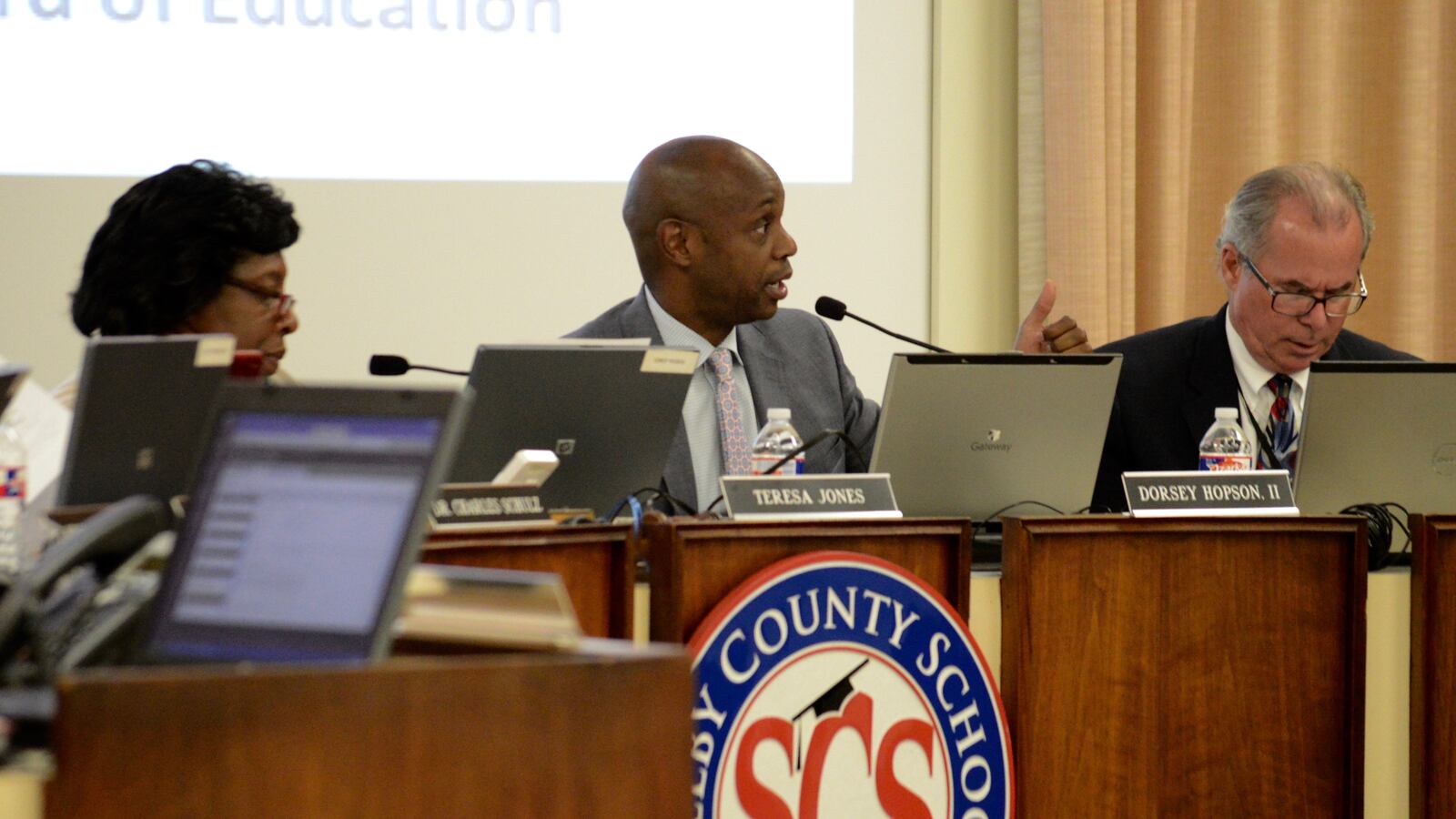On the eve of its new fiscal year, leaders for Shelby County Schools ironed out the final details of the district’s $959 million budget, preparing to give most of its teachers a 3 percent raise and restoring funding for positions deemed critical for continued academic progress.
The school board approved its operations budget for 2016-17 on Thursday after pulling $3.5 million from its reserve fund to help balance its spending plan for academic and staffing needs.
The remaining difference came from from lowering anticipated unemployment benefits, increasing anticipated sales tax revenue, and closing two more high schools — Carver and Northside — approved by the school board in recent weeks.
That covers the last of a shortfall that at one time stood at $86 million and has been whittled down over five months, culminating on Wednesday when Shelby County commissioners agreed to increase funding to the district by $22 million.
The $959 million budget is $30 million less than the district spent this year, but Superintendent Dorsey Hopson said the final tally avoids the worst cuts initially proposed.
With the County Commission’s vote this week to significantly increase funding for local schools, the district restored funding for 12 guidance counselors, reading and math specialists, and additional staff to absorb students from the closed schools. Also off the chopping block now is Hope Academy, a program for students in juvenile detention that represented one of the least expensive yet high-impact cuts proposed by Hopson’s administration. The program educates about 900 students per year for about $625,000.
As the new fiscal year begins on Friday, Hopson said the biggest investments will go to literacy, technology and small-scale replications of program successes achieved through the Innovation Zone, the district’s turnaround program for low-performing schools in the state’s bottom 5 percent.
“We’re looking to extract things we’ve done well and see if we can scale some of those things,” he said.
One of those initiatives is the Empowerment Zone, anchored by Whitehaven High School and seasoned principal Vincent Hunter. Several of the schools in Whitehaven’s feeder pattern are in the bottom 10 percent of schools statewide and on the cusp of being eligible for state intervention. The effort will include some teacher signing bonuses and more sharing of best practices among the schools.
With the state-run Achievement School District taking a hiatus from adding schools to its turnaround initiative, Hopson said the relative stability in enrollment will reduce the likelihood of another large budget deficit next year.
Top teachers will enjoy a long-sought 3 percent raise through a $13 million investment, even while union leaders lament the performance scale that the increase is based on.
In the upcoming year, the district also will pilot a new funding model to present for next year’s budget known as “student-based budgeting.” The approach is designed to provide more equitable funding across the district, which is Tennessee’s largest and poorest.
Student-based budgeting shifts from allocating money to schools based on a flat per-student rate toward building budgets that allocate more to students with higher needs. It also gives principals more autonomy on how to spend the money.
Also on the horizon, the district will take a hard look at how to get the right number of facilities for its students in the face of declining enrollment. Hopson repeatedly has said the district has 27,000 more seats than students to fill them, which will lead to more school closures in the coming years. A facilities study is expected in September.

